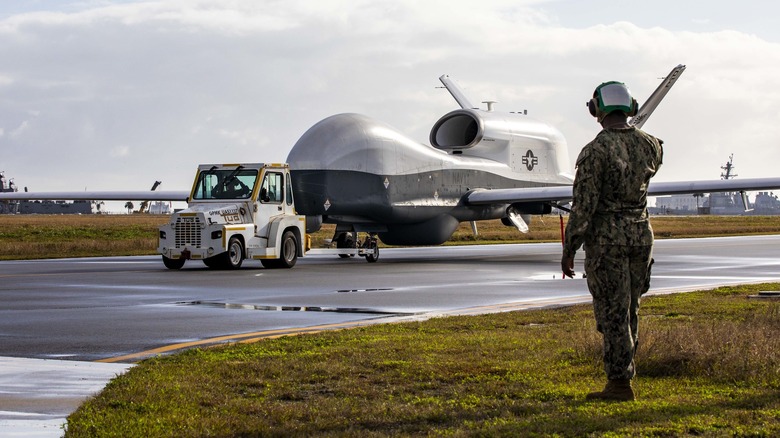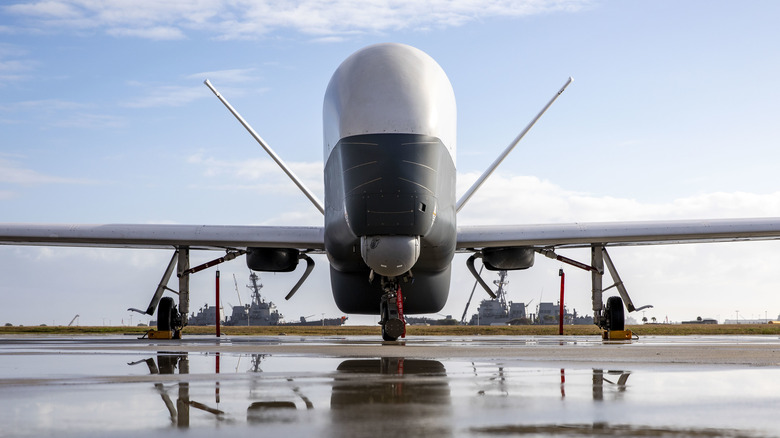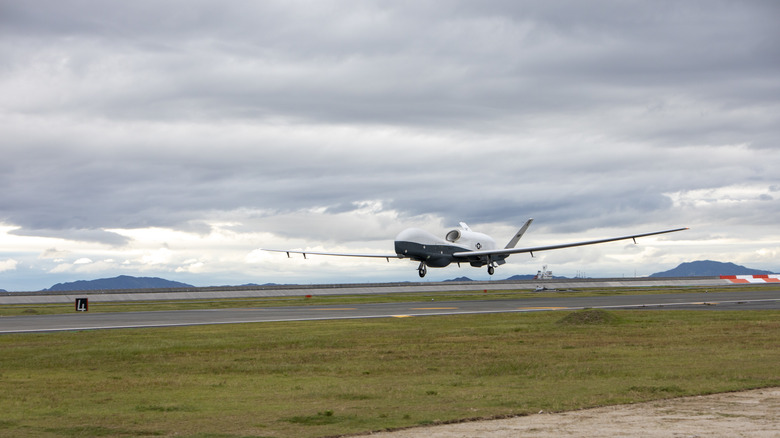The U.S. Navy’s Sixth Fleet announced on March 30, 2024, that the Navy’s largest drone and one of its most capable maritime patrol assets— the MQ-4C Triton — had been forward-deployed to Europe for the first time. Part of the Unmanned Patrol Squadron (VUP-19) and nicknamed “Big Red”, several Tritons are now stationed at Naval Air Station (NAS) Sigonella in Sicily, Italy. It’ll allow U.S. commanders to keep a close eye on hotspots in Europe and Africa, such as the Mediterranean Sea, the Black Sea, and with its range of 8,200 nautical miles, even part of Africa and as far as the Middle East.
Despite its impressive capabilities, the Navy has been relatively cautious in deploying the MQ-4C internationally. Apart from Sigonella, the other main hub for VUP-19’s Tritons is Andersen AFB in Guam, where the drone’s sophisticated intelligence, surveillance, and reconnaissance (ISR) equipment has been used to keep a watchful eye on the Pacific theater and America’s major competitors in the region, such as China. So, what sets the Triton apart from the numerous other unmanned aerial vehicles in the U.S. military’s arsenal?
MQ-4C Triton 101
The MQ-4C Triton isn’t an “original” design, per se. Instead, it’s a variant of the RQ-4 Global Hawk, which shares its overall design and objective as the U.S. military’s premier high-altitude, long-endurance unmanned reconnaissance platform. However, the Triton is retrofitted to act as what the Navy calls an: “Intelligence, Surveillance, Reconnaissance Maritime Patrol asset.” The Triton is perfect for the role, with its ability to fly for over 30 hours at altitudes up to 55,000 feet.
Central to the Triton’s capabilities is its primary sensor, the AN/ZPY-3 Multi-Function Active Sensor (MFAS) radar. This advanced active electronically-scanned array (AESA) radar system enables the Triton to survey vast expanses of land and shorelines, covering millions of square miles, regardless of weather conditions. This exceptional surveillance capability has garnered significant interest from U.S. allies, with Australia notably procuring a fleet of seven Tritons to monitor its territorial waters.
While the Triton shares its overall design with the Global Hawk, several key modifications set it apart. The Triton features a reinforced airframe, designed to withstand the challenges of operating at lower altitudes, such as hail, bird strikes, and lightning. This enhanced durability allows the Triton to descend to altitudes as low as 10,000 feet, enabling closer inspection of targets using its multi-spectral electro-optical/infrared sensor. In contrast, the Global Hawk is constrained to operating at altitudes of 50,000 feet or higher.
The Triton’s Role in the Fleet
The MQ-4C Triton’s role as a “wingman” to the Navy’s P-8A Poseidon aircraft is a crucial aspect of its contribution to the battlefield. The Triton’s extended loiter time of up to 30 hours allows for near-constant surveillance of areas of interest, freeing up the P-8A to respond to identified threats or tasking the Navy’s surface ships, such as destroyers, to investigate further. This synergy between the unmanned Triton and manned assets was exemplified in 2016 when the Navy successfully tracked down arms shipments destined for Houthi rebels in Yemen.
The European Tritons were likely equipped with the Multi-Intelligence (Multi-Int) system, which gives it additional electronic and signal intelligence (ELINT/SIGINT) abilities. It can “sniff the airwaves”, so to speak, and single out comm chatters in the area to be dissected and analyzed back at home base. This capability is especially valuable in the Black Sea region, where U.S. assets like the Global Hawk have been persistently monitoring since the Russian invasion of Ukraine in 2022.
Last but not least, the MQ-4C serves as a relay node, receiving and transmitting data from various sources across the battlefield. As a literal link that ties the fleet together, the Triton can be an indispensable asset for the Navy to have any time, anywhere — a motto that’s becoming more and more realistic with this latest deployment to Europe of the Triton.
Source: http://www.slashgear.com/1557401/american-drone-in-europe-mq-4c-triton/
 drone-reviewm.com
drone-reviewm.com



